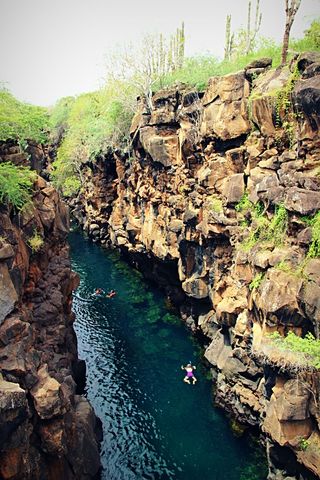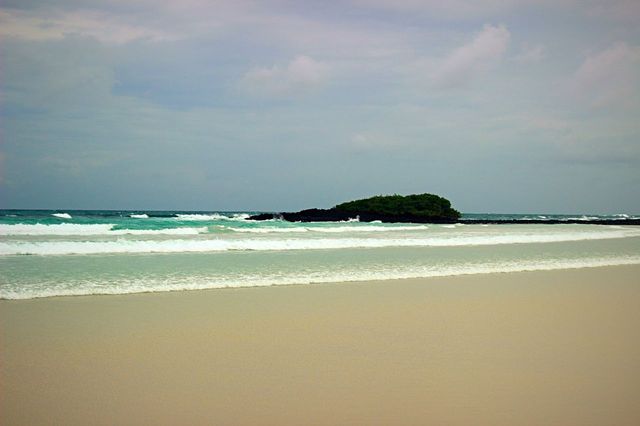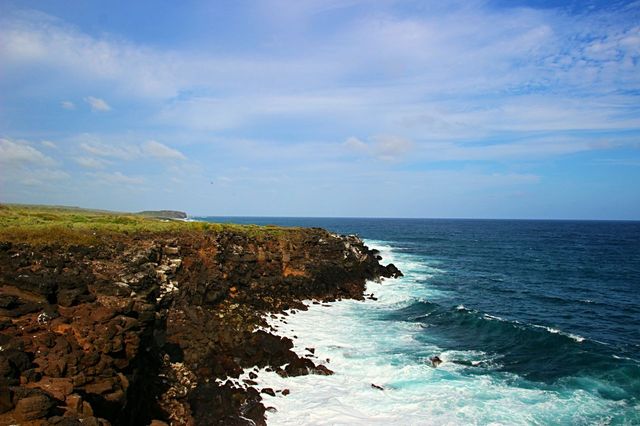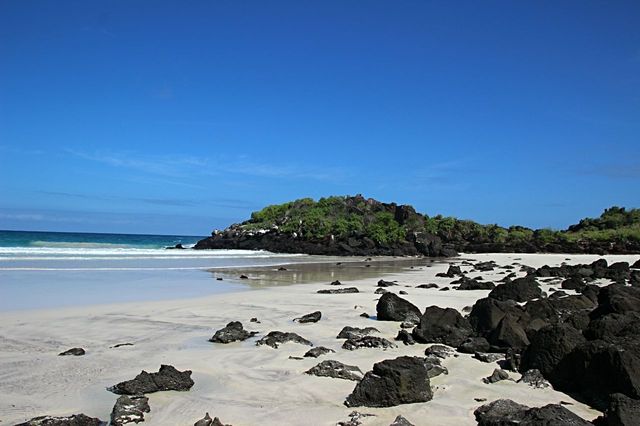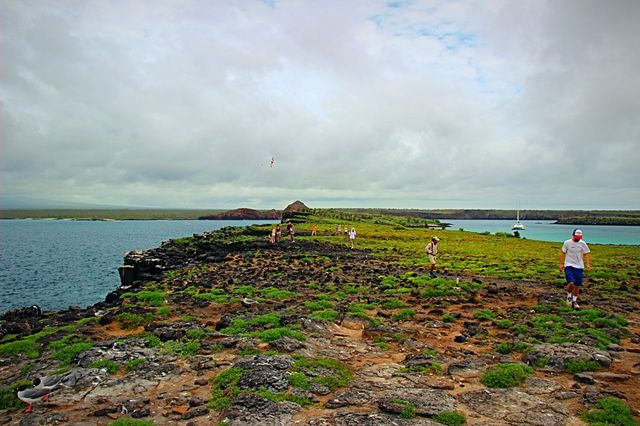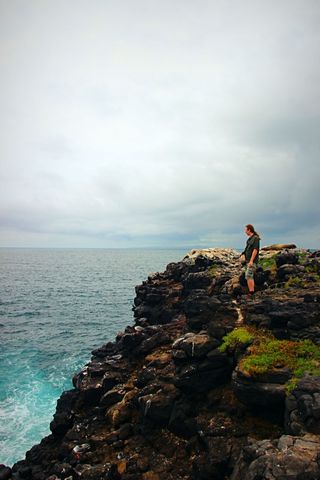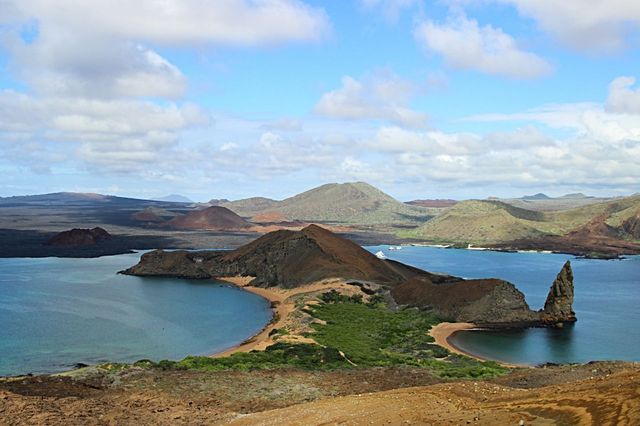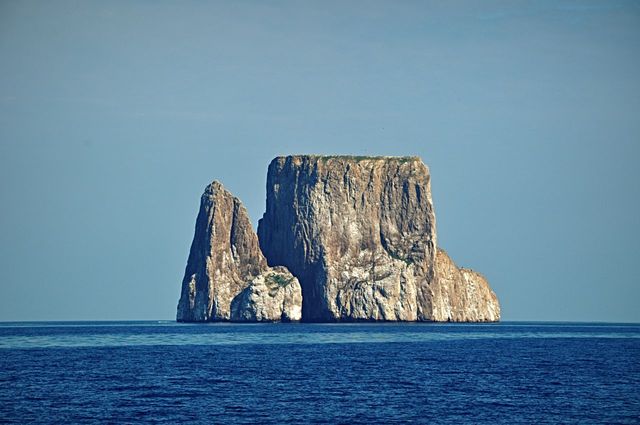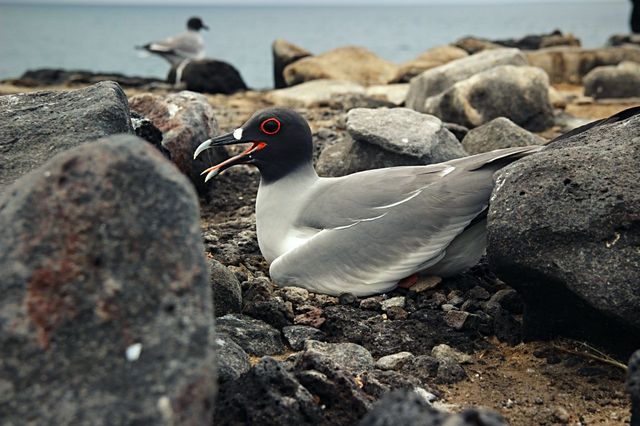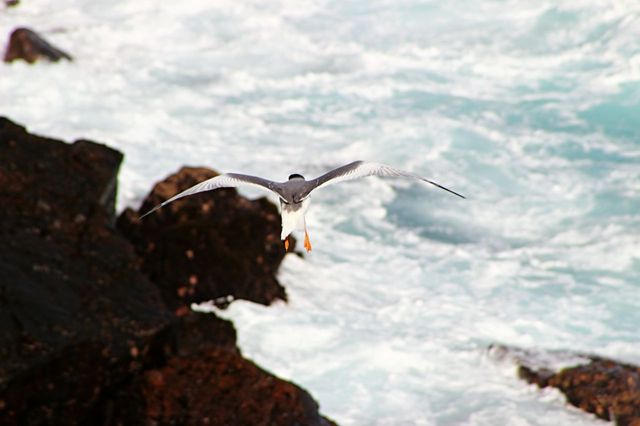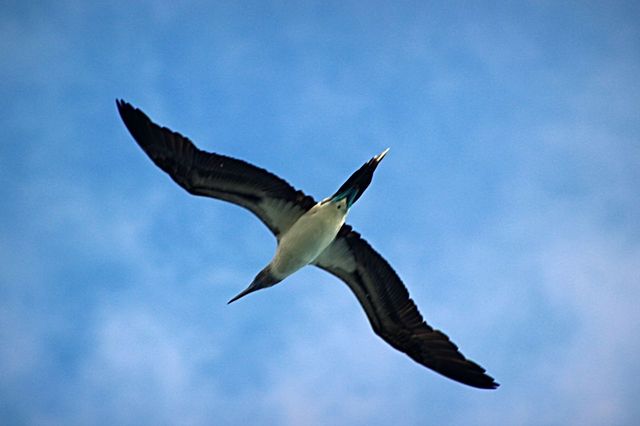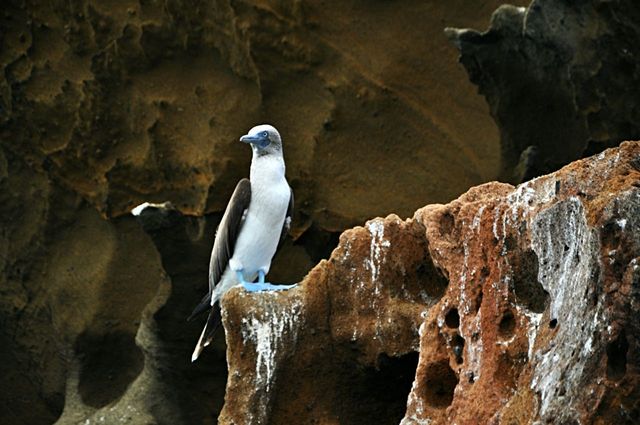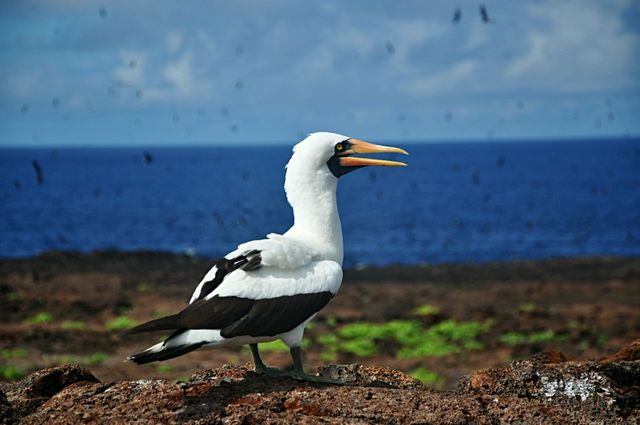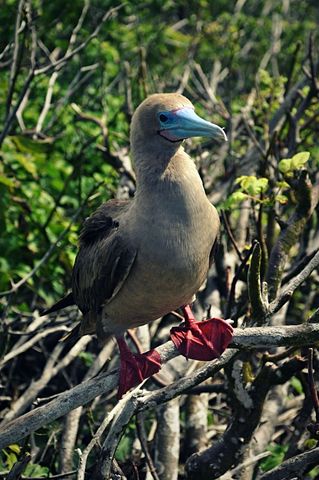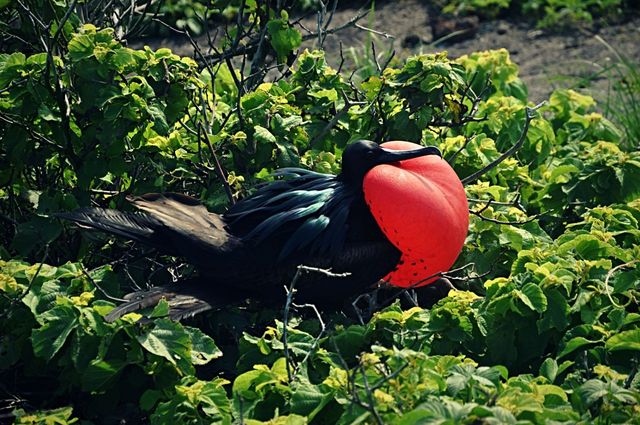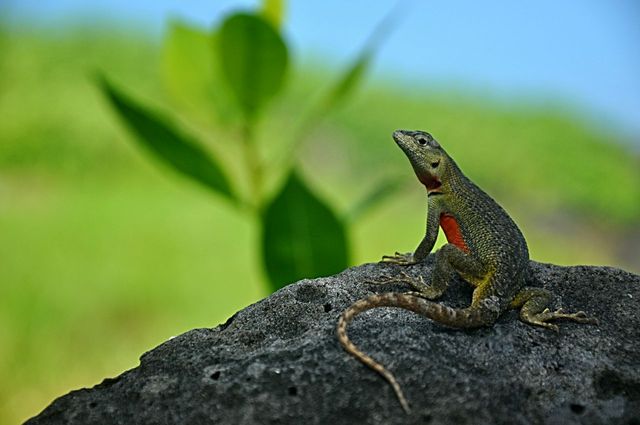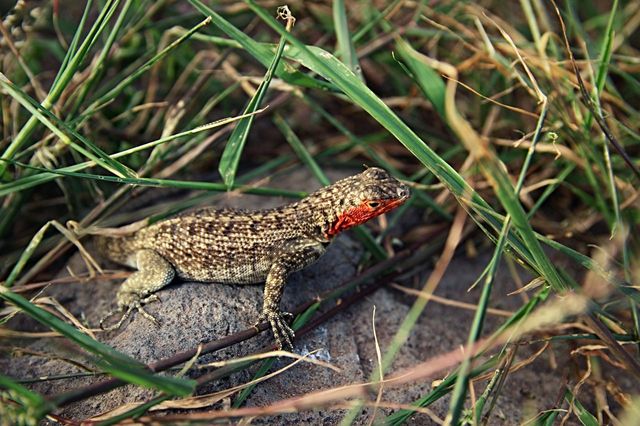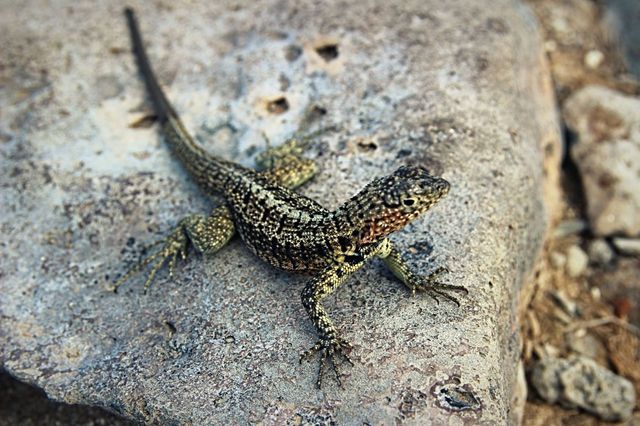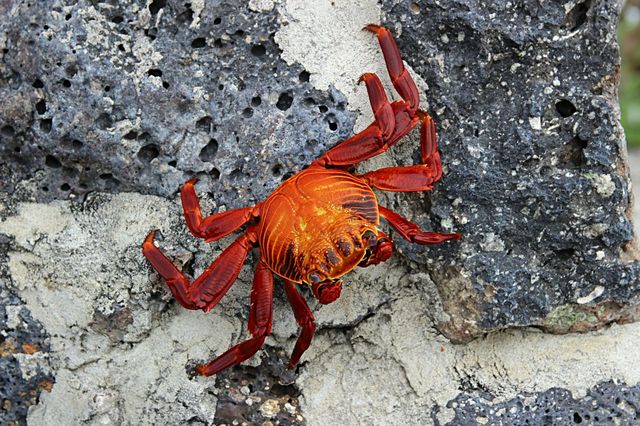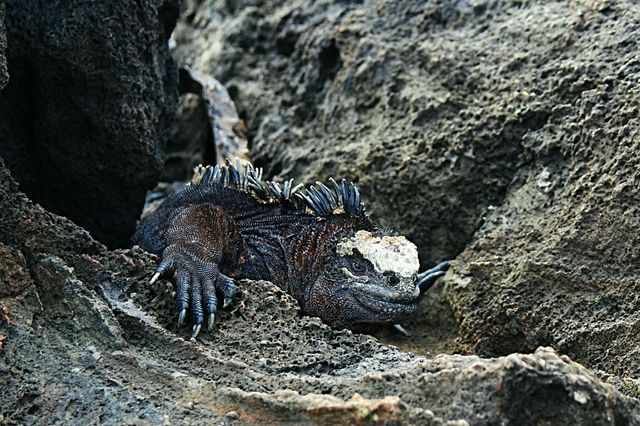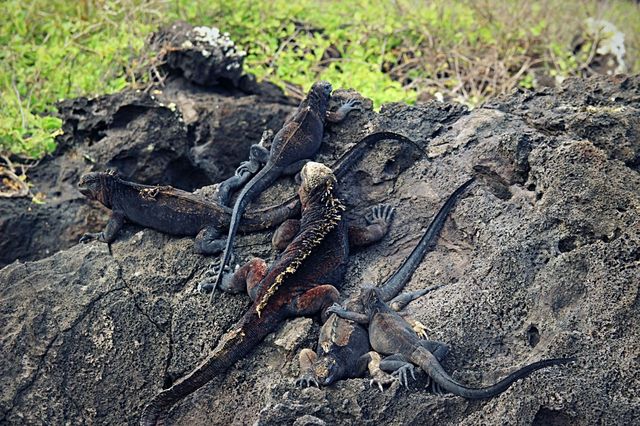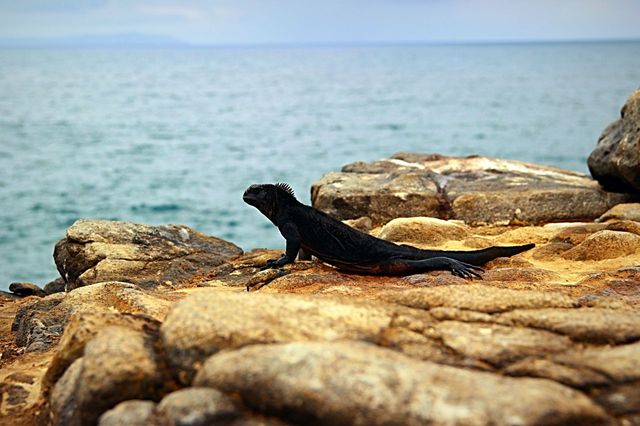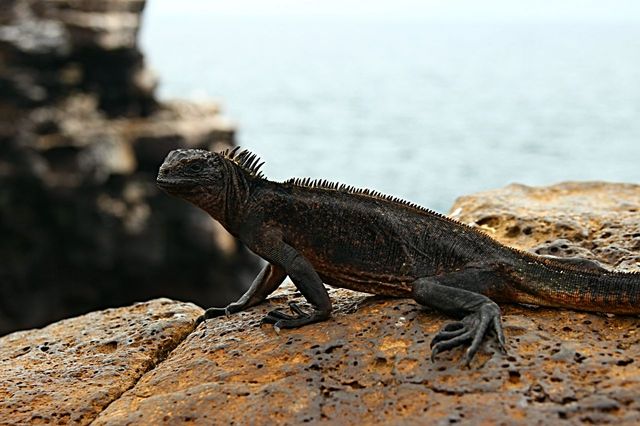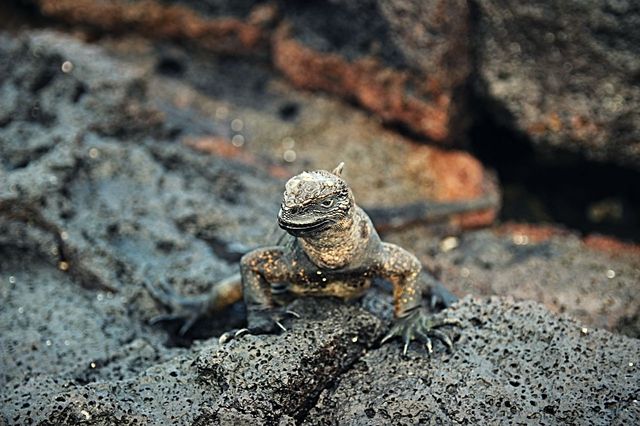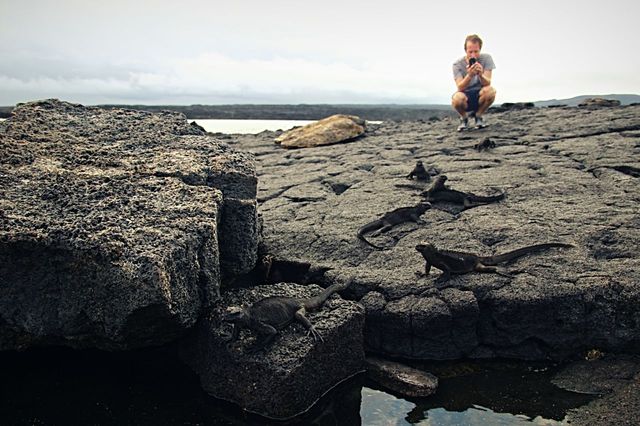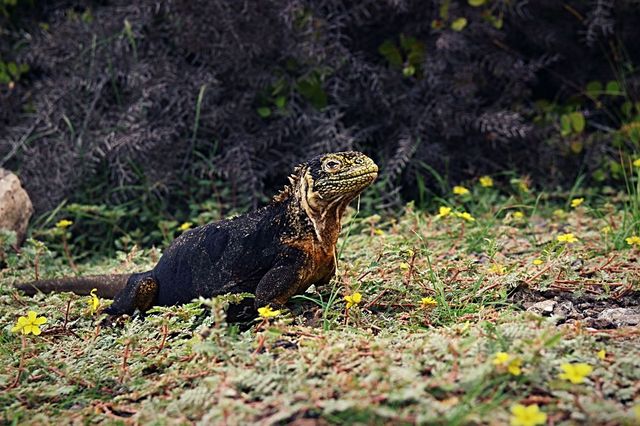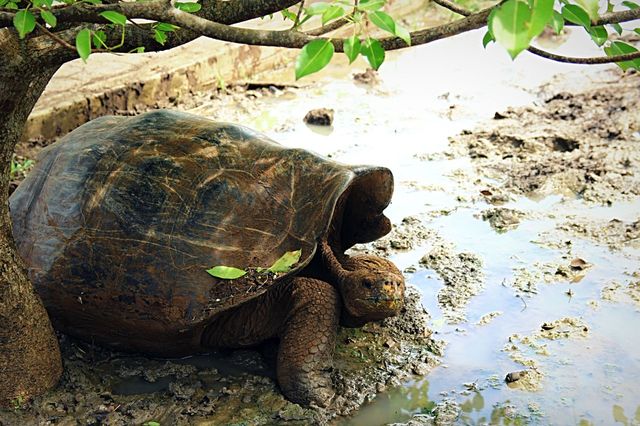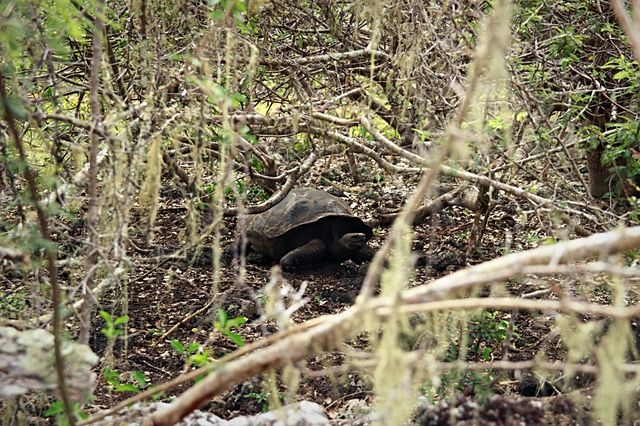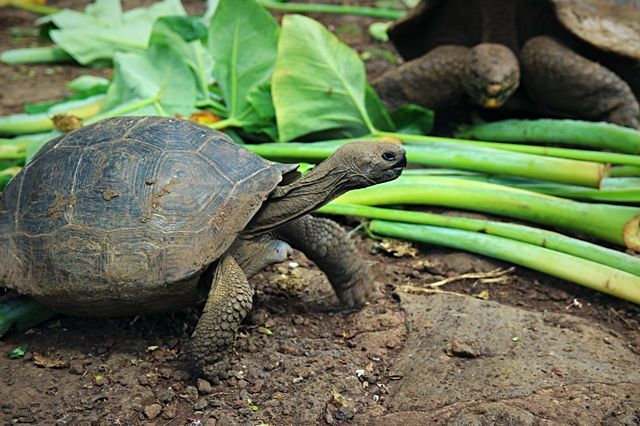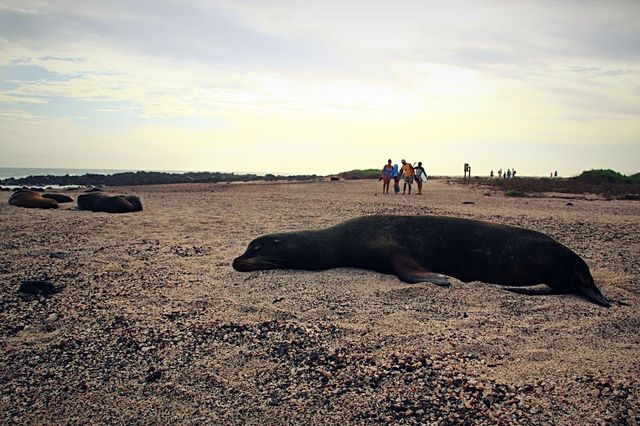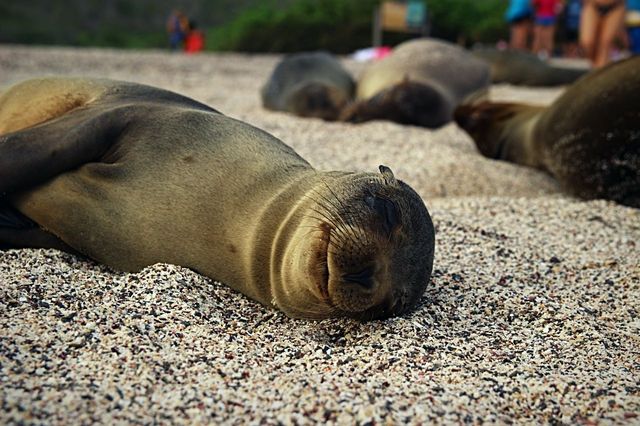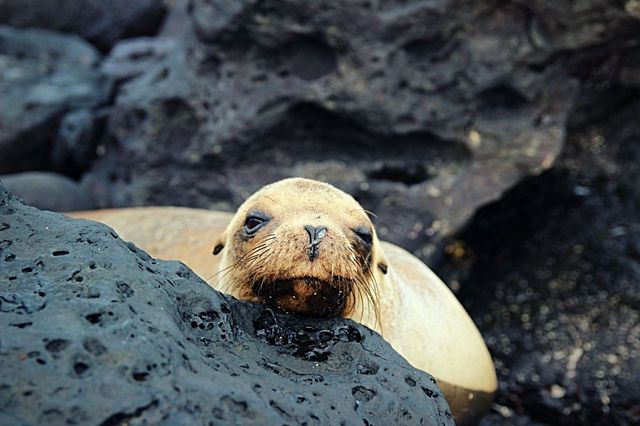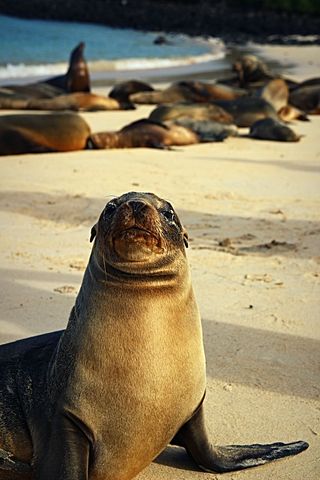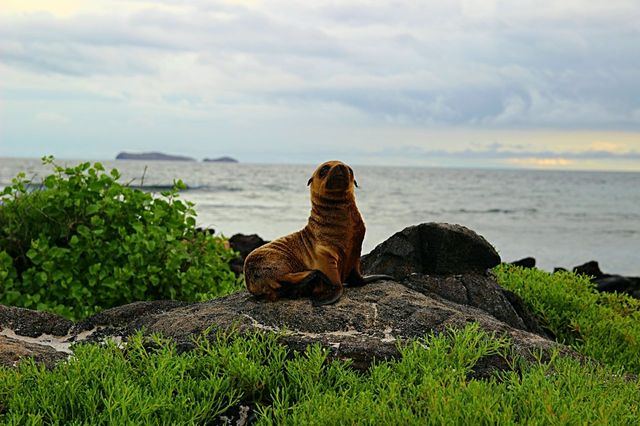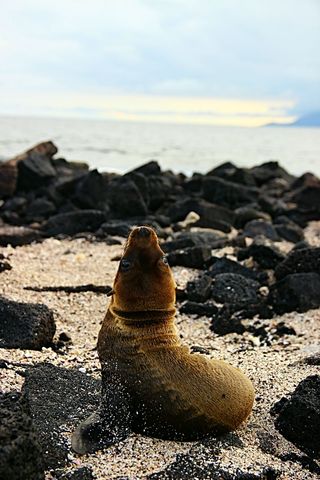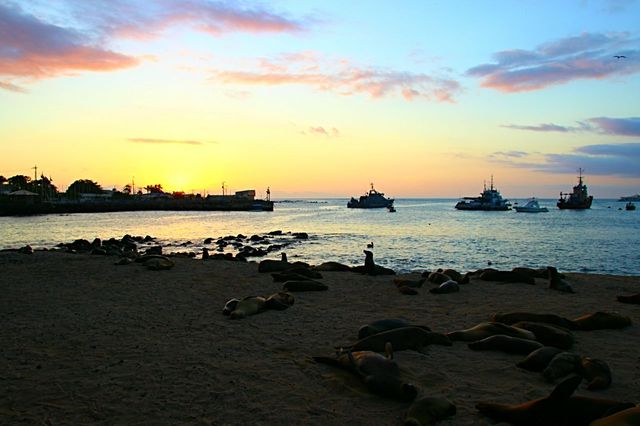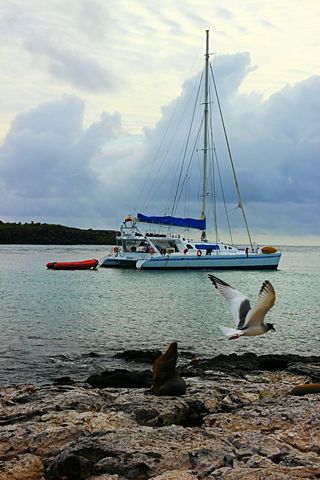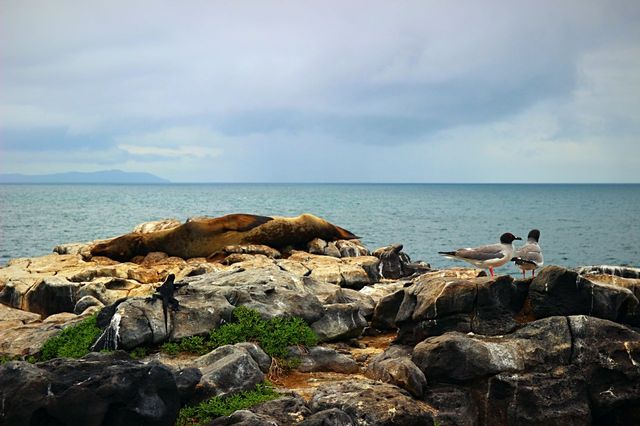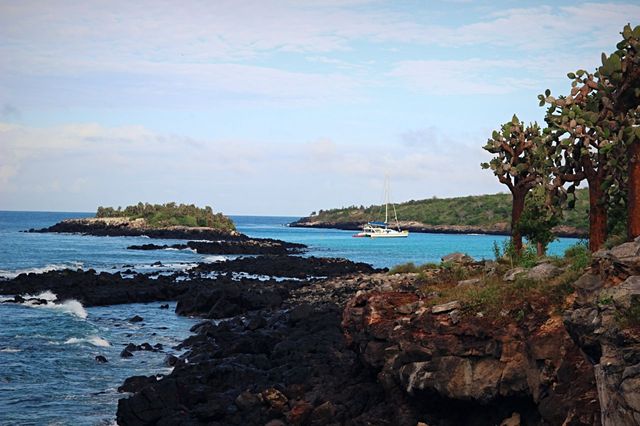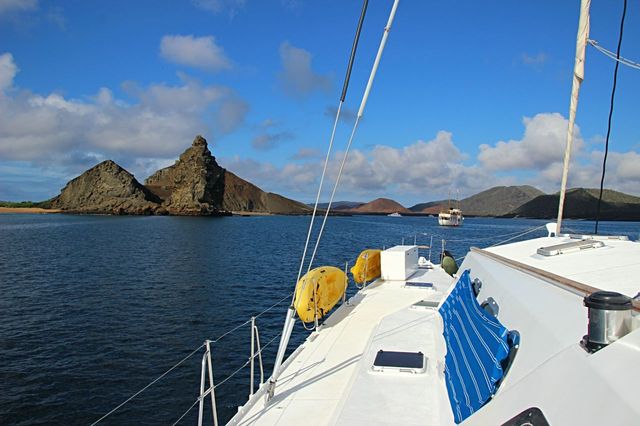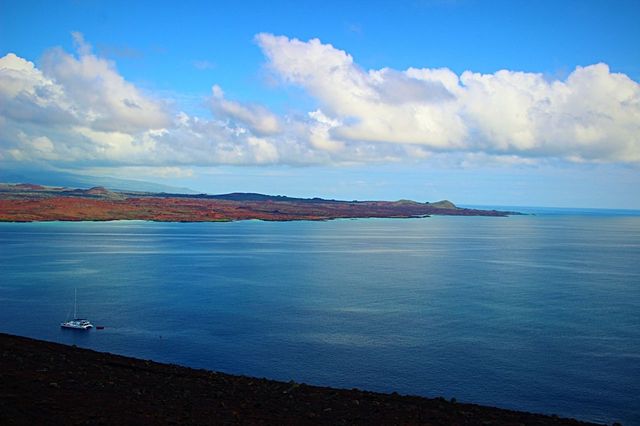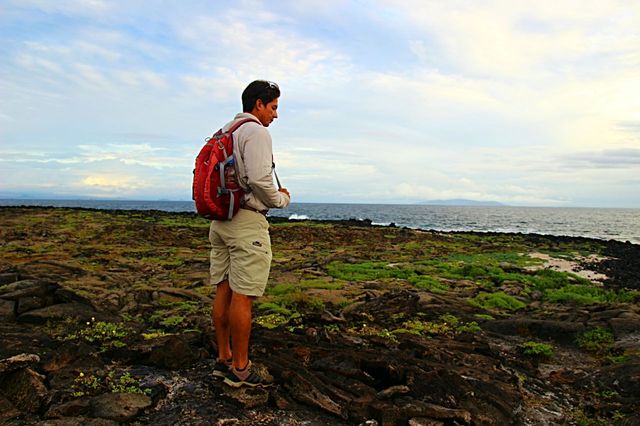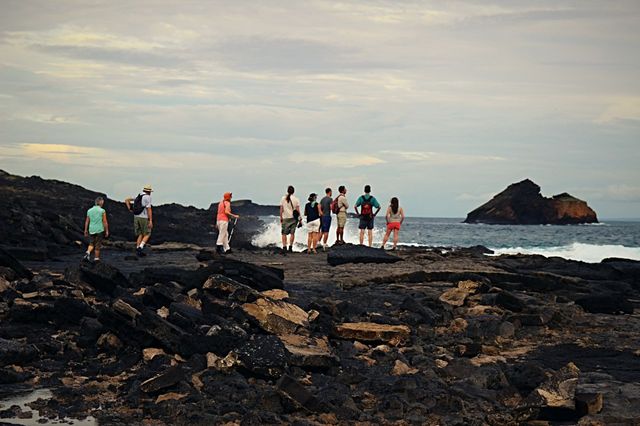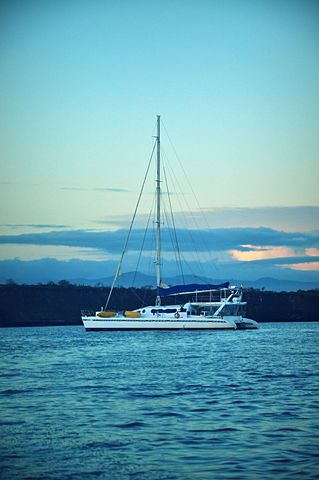Galápagos - A Tale of Endemic Creatures and Seasickness

It's difficult to put the beauty of the Galápagos Islands into words. I'm no writer, and even if I would be, I would have my doubts if I could do so. Therefore I won't try it here. I think that pictures are better suited.
But lets start with the facts, in the rare case that you've never heard of this group of volcanic islands. The Galápagos Islands consist of 18 major islands and numerous islets. Approximately 25,000 people call one of the four inhabited islands their home. The largest population has Santa Cruz Island, and the one with the biggest landmass is Isabela Island. Together all islands cover around 8,000 square kilometers, spread across 45,000 square kilometers of ocean. They are located around 1,000 kilometers west of the Ecuadorian mainland, are spread north and south of the Equator and are politically part of Ecuador. Due to there volcanic origin, numerous volcanos can be found on the islands, the highest of them is Volcán Wolf on Isabela Island. The islands are home to a vast number of endemic species, among them the Galápagos Fur Seal and Sea Lion, the famous Galápagos Land Iguana, Marine Iguana, Lava Lizard and Darwin's finches. Blue-Footed, Red-Footed, and Masked Boobies are also common elsewhere, but nowhere are they as approachable as here. Most people will connect the Galápagos Islands to Charles Darwin, who stopped on several islands while being part of the voyage of the Beagle.
I was prepared for everything and nothing. One thing I learned during traveling is to have no expectations, this enhances the experience so much more. This worked very well when I visited the Iguazu Falls for example. Of course this is a hard to accomplish goal, you will eventually read travel guides, blog articles or talk to other travelers. But whatever my expectations before this trip were, they were excelled. The beauty of this place and its numerous inhabitants (human or non-human) is just incredible. Looking back, a true once in a lifetime experience, although I promised myself to return someday.
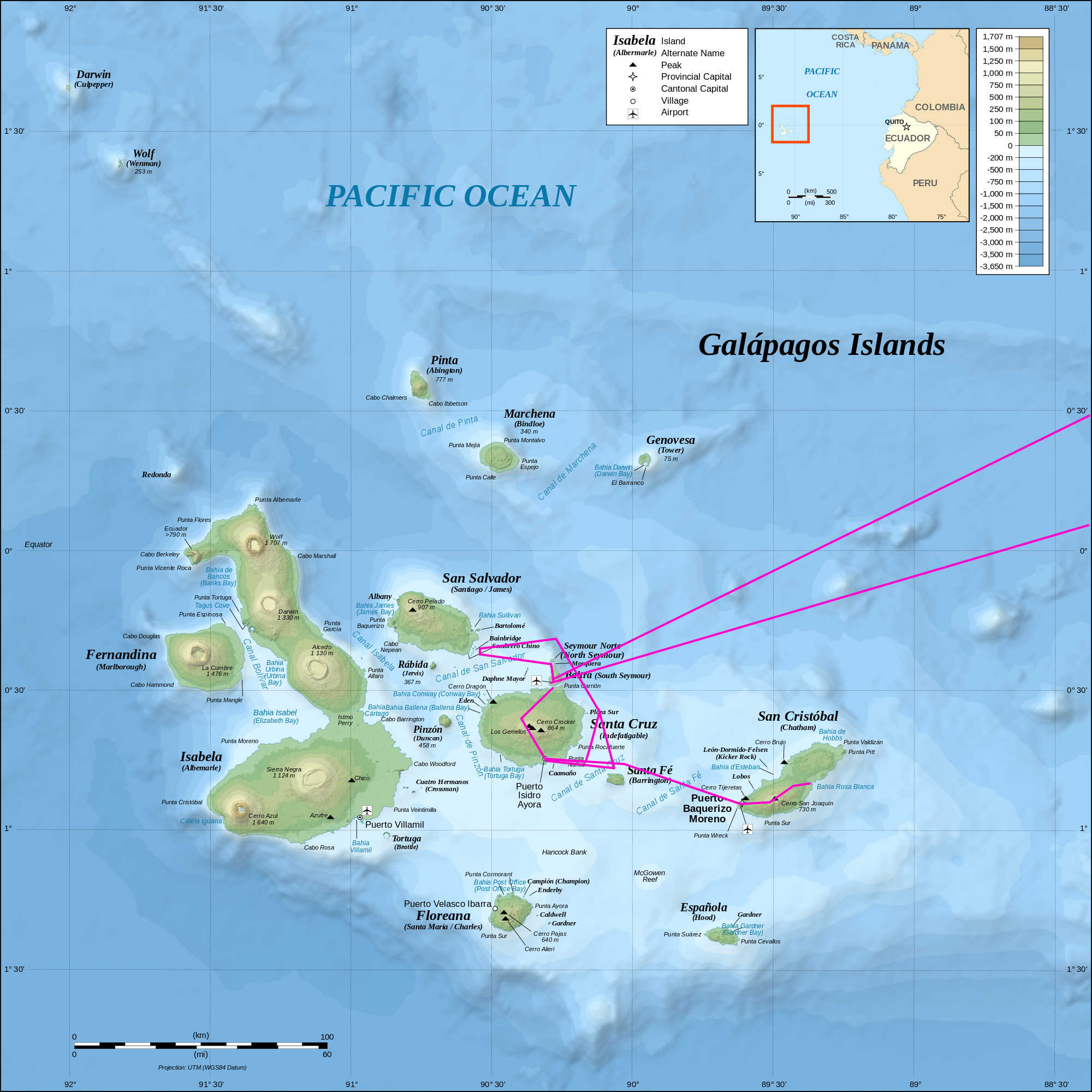
Luckily a pal from Germany joined me for this trip so I had company. We started on Baltra Island (arriving from Guayaquil), almost everyone is forced to, because the main airport is located there, the other being on San Cristóbal Island. From there it goes via bus, boat and again a bus to Puerto Ayora on Santa Cruz Island, the first stop and the largest town on the islands. On Santa Cruz Island there are already several sights, e.g. Playa Los Alemanes, Las Grietas and the Charles Darwin Research Station. After two nights we switched to San Cristóbal Island, a bumpy 80 kilometer ride through three meter waves. Due to my seasickness one of the worst boat rides of my life. During the next days we prescribed ourselves a strict no boat program, so we cycled to Puerto Chino and relaxed in Puerto Baquerizo Moreno (the capital of the Galápagos Islands). After that we had to get back to Santa Cruz Island in order to board a cruise, this time the boat ride was better, due to anti-seasickness drugs and less waves, although all ferries were forced to stay in the port until one day before. The cruise with the Nemo III started in Puerto Ayora and took the following scenic route: South Plaza, Santa Fe Island, Bartolomé Island, Sombrero Chino and Mosquera Islet. After the cruise was over we had some relaxing days on Santa Cruz Island (I admit it were maybe slightly too many, and the options of doing something run out quickly when you refuse to board a boat) before we went back to Baltra Island to board a plane to Quito.
There are more pictures on Instagram, click here, here and here if you like!
